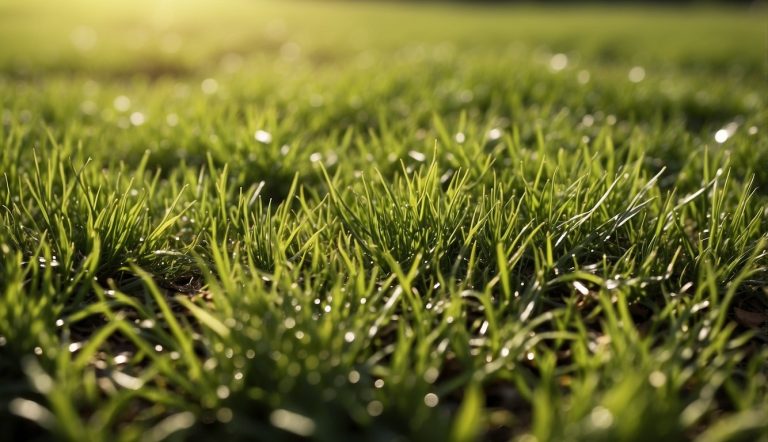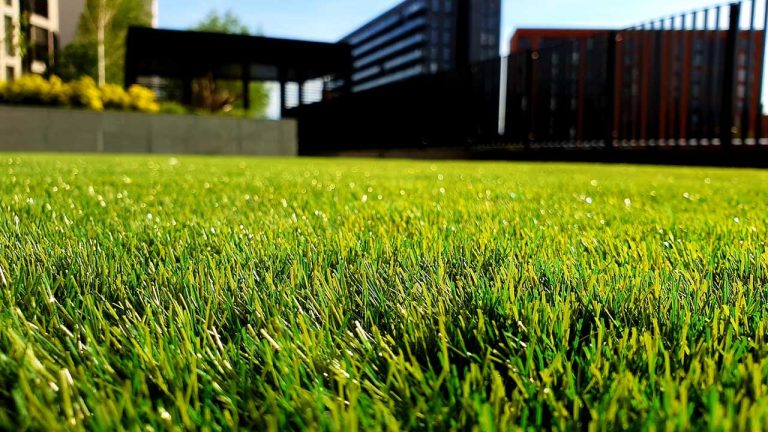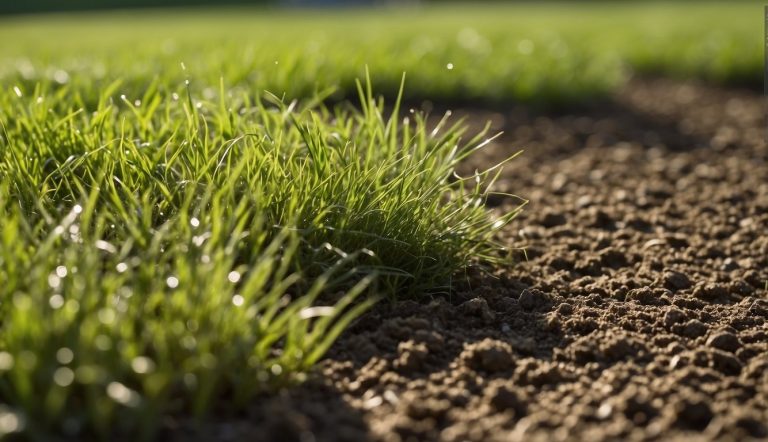How to Get Rid of Moss on Artificial Lawn: Easy Care Tips
Moss growth on an artificial lawn can be a surprising issue, as many homeowners opt for synthetic turf specifically to reduce maintenance hassles. However, even these durable green spaces aren’t immune to nature’s challenges.
When I noticed patches of moss in the nooks and crannies of my own artificial turf, it quickly became clear that action was needed to restore the aesthetic appeal and prevent potential damage to the artificial blades.
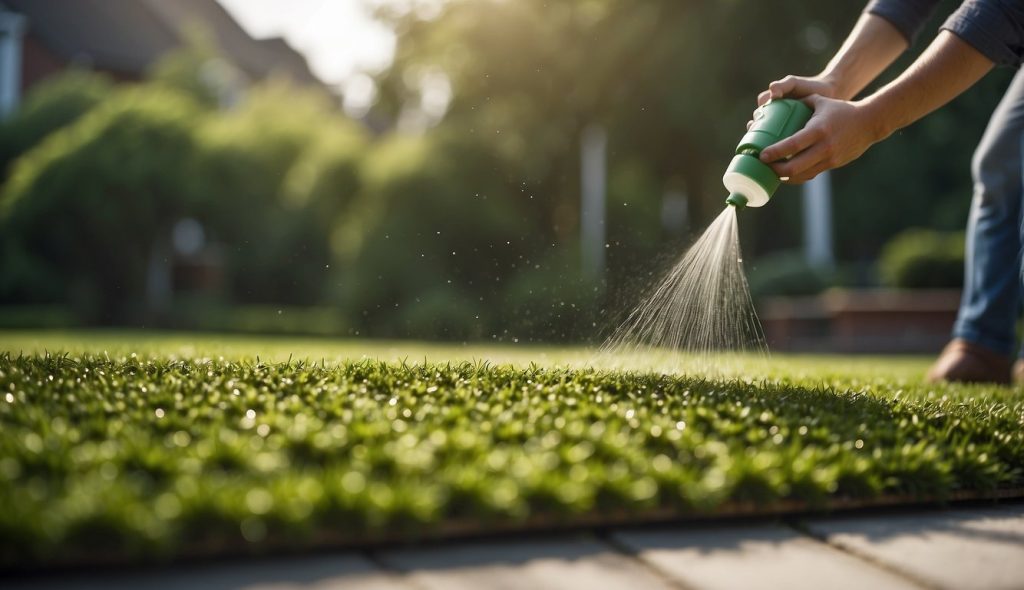
The key to tackling moss on artificial grass lies in understanding its growth habits. Moss thrives in damp, shady areas and can spread quite rapidly if not addressed.
Regular inspection and prompt removal are essential for maintaining a pristine lawn. Whether it’s through natural home remedies or more targeted chemical treatments, dealing with moss calls for a balance of effectiveness and care to ensure the longevity and appearance of the artificial lawn remain intact.
Key Takeaways
- Moss can grow on artificial lawns and requires timely intervention.
- Regular maintenance is vital to prevent and manage moss growth.
- A combination of manual and chemical methods can effectively remove moss.
Table of Contents
Understanding Moss on Artificial Lawns
In my experience, addressing moss growth on artificial lawns requires an understanding of its causes and the issues it can present. Let me share with you the essential details.
Causes of Moss Growth
Moss finds its way onto artificial turf often due to damp conditions and a lack of proper maintenance. Here are a few specific causes:
- Moisture: High levels of moisture, possibly from rain or sprinklers, without adequate drainage.
- Shade: Moss thrives in shaded areas where the sun doesn’t fully reach to dry out the turf.
- Weather Conditions: Prolonged periods of cloudy or damp weather encourage moss to settle in.
Ensuring good drainage and reducing the amount of shade can mitigate the problem. Regular cleaning also plays a crucial role in moss prevention.
Issues Related to Moss Infestation
Moss may seem harmless, but it can cause several issues:
- Aesthetics: Moss can create unsightly patches on your lawn.
- Safety: A layer of moss can be slippery, posing a fall hazard.
- Maintenance: Over time, moss can lead to a need for more frequent cleanings or even professional maintenance to restore the appearance and safety of your artificial lawn.
Regular Maintenance Techniques
Maintaining my artificial lawn to keep it free from moss involves routine care. Regular maintenance not only enhances the lawn’s appearance but also prolongs its lifespan. I focus on proper cleaning and ensuring efficient drainage to prevent moss growth.
Proper Cleaning and Rinsing
I make sure to keep the artificial grass fibers upright and free from debris by using a soft-bristle rake or a leaf blower, which effectively removes leaves and other organic materials. Every month, I:
- Gently rake the lawn to lift the blades and remove debris.
- Rinse the lawn using a garden hose to wash away dust and small particles.
This routine helps to maintain cleanliness and deters moss formation.
Effective Draining Practices
Good drainage is crucial to moss prevention. Here’s my approach:
- Inspect drainage points periodically for clogs and clear them.
- Confirm the lawn’s angle aids drainage, preventing water from pooling.
By ensuring the artificial turf is well-drained and not shaded away from sunlight, I minimize the chance for moss to settle and grow.
Preventative Measures

To keep an artificial lawn looking pristine, prevention of moss growth is crucial. I’ll cover how to optimize sunlight and enhance air circulation to inhibit the development of moss.
Optimizing Sunlight and Reducing Shade
Excessive shade is a primary contributor to moss problems on artificial lawns. Here’s what I do to mitigate it:
- Trim Overhanging Branches: Using pruning shears, I cut back any overhanging branches from trees that cast too much shade on the lawn.
- Manage Thatch: Although less of an issue with artificial turf, keeping any adjacent natural lawns dethatched helps maintain proper sun exposure.
Improving Air Circulation
Good air circulation plays a vital role in preventing moss on my artificial lawn. Here are the specific steps:
- Prune Surrounding Foliage: I regularly prune plants around the lawn to enhance airflow.
- Reposition Lawn Furniture: I make sure to rearrange outdoor furniture periodically to prevent the formation of shaded spots that can encourage moss growth.
Manual and Chemical Moss Removal
When tackling the unwanted presence of moss on your artificial lawn, I’ve found that a combination of manual and chemical methods can be highly effective. Let’s get into the specifics of each approach.
Using Hand Tools for Physical Removal
For manual moss removal, I recommend the use of a plastic rake. It’s gentle enough to avoid damaging your artificial turf while still being effective at getting rid of the moss. Here’s how I proceed:
- Step 1: I gently pull the rake across the mossy areas to loosen the unwanted growth.
- Step 2: I make sure to do a thorough job, raking all parts of the infected area while being careful not to tear the lawn.
This physical method often needs to be repeated every so often for a complete deep clean, as moss can persist.
Applying Moss Killers Safely
When it comes to chemical moss killers, I am always careful to choose products wisely and apply them according to the label’s instructions. Here’s a brief guide:
- Choose the Right Moss Killer:
- Glyphosate – Effective but should be used sparingly and with caution around plants I wish to keep.
- Ferrous Ammonium Sulfate – Less harsh and can act quickly on moss.
- Application:
- I always wear gloves and ensure that no pets or children are near the lawn.
- I dilute the moss killer as directed, sometimes adding a bit of dish soap to help it adhere to the moss.
- Safety Measures:
- Keep chemicals away from water sources.
- I store all products safely after use to prevent accidents.
Professional Solutions and Services
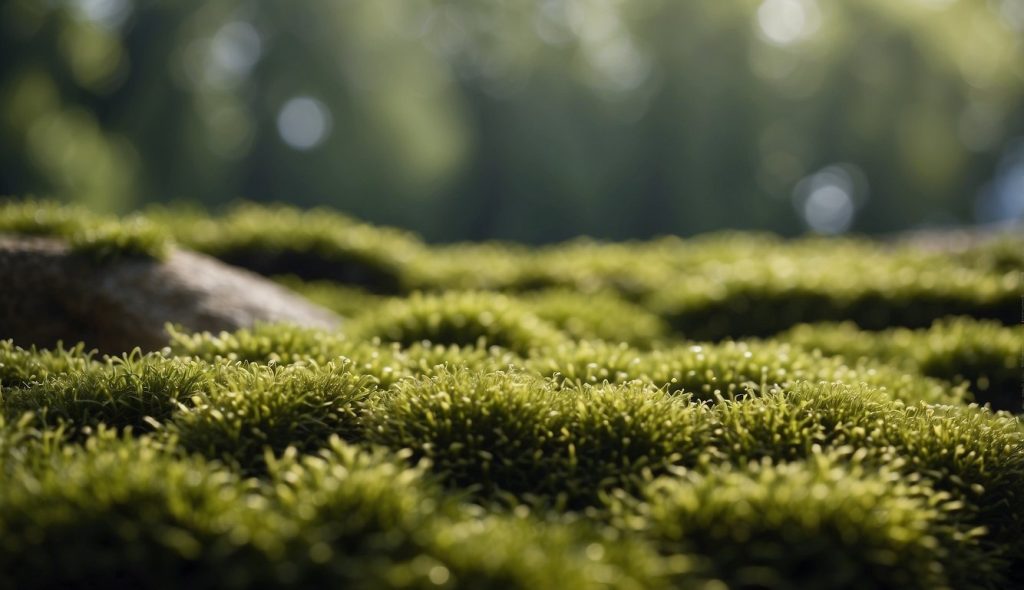
In the realm of artificial lawns, moss can be an unsightly nuisance. I’ve found that reaching out for professional solutions and services is a savvy move, especially if dealing with persistent moss.
- Professional Artificial Grass Cleaners: Typically, professionals use specialized equipment to effectively remove moss. They may employ commercial moss killers that are suitable for artificial grass, ensuring that your lawn isn’t damaged.
List of Professional Services:
- Moss Removal: Experts have the know-how to safely remove moss without harming your artificial turf.
- Deep Cleaning: Using a garden sprayer and eco-friendly cleaning agents, they can rejuvenate your lawn’s appearance.
- Dethatching: This service involves removing debris that can contribute to moss growth.
- Commercial Moss Killers: When I opt for professionals, I look for those who use products designed for synthetic grass. They apply these treatments with precision, keeping moss at bay.
Example of a Treatment Plan:
| Service | Frequency |
|---|---|
| Initial Moss Removal | As needed |
| Follow-up Treatments | Bi-annual or Annual |
- Sports & Landscaping Expertise: If you have a sports field or tailored landscaping, professional services can give tailored advice. Their experience means they can protect the integrity of your sports surface or ornamental lawn while tackling moss.
Customer Service Experience: Always look for professionals with great reviews for their customer service. The best companies will listen to your concerns and offer solutions specific to your situation.
Frequently Asked Questions
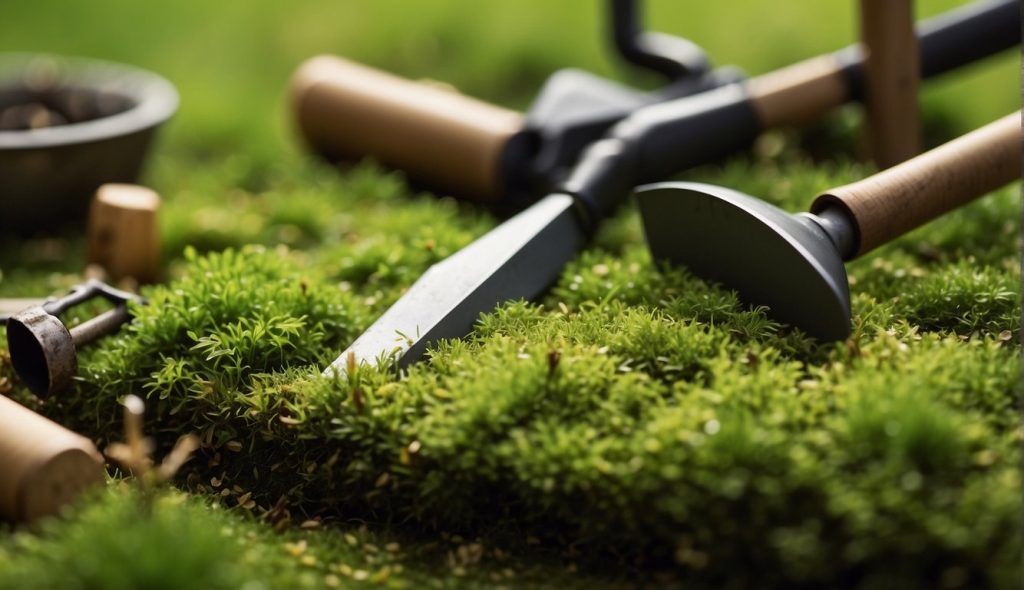
I’ve compiled some of the common questions about keeping synthetic lawns moss-free and provided specific solutions to help you maintain a clean and green artificial lawn.
What is the most effective moss killer for synthetic lawns?
My research shows that for synthetic lawns, a water-based biocide treatment is highly effective. It targets moss without damaging the artificial fibers.
How can I properly clean mold and algae off my artificial turf?
To clean mold and algae, I recommend a gentle scrub with a mixture of water and white vinegar. Ensure thorough rinsing with water afterward to prevent any residue.
Why does moss grow on artificial grass and how can I prevent it?
Moss tends to grow on artificial grass due to excess moisture and lack of sunlight. To prevent it, I ensure proper drainage and occasionally brush the fibers to keep the turf dry and upright.
Can I use vinegar to safely remove moss from my artificial grass without damaging it?
Yes, diluted white vinegar is a safe and natural option I use. It can effectively kill moss; just be sure to rinse the area thoroughly after application.
What are the best tools or accessories to maintain moss-free artificial grass?
I find that a stiff brush or rake for regular upkeep and a handheld pump sprayer for applying treatments are essential tools to maintain my moss-free artificial turf.
Is there a specialized method for removing moss on synthetic grass tennis courts?
For moss on synthetic grass tennis courts, I recommend a regular moss-killing treatment combined with mechanical brushing specially designed for large areas to ensure even cleaning.



